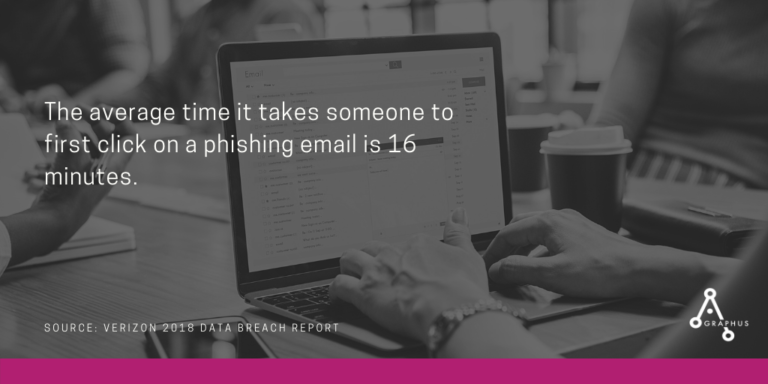Why and where secure email gateways fail, Graphus® excels

16 minutes is all the time you have to protect your organization from sophisticated phishing attacks. Is your organization protected?
Before we get into why and where secure email gateways (SEGs) fail, let’s first understand what a SEG is. According to TechTarget, “An email security gateway is a product or service that is designed to prevent the transmission of emails that break company policy, send malware or transfer information with malicious intent.” According to Gartner, “Secure email gateways (SEGs) provide basic message transfer agent functions; inbound filtering of spam, phishing, malicious and marketing emails; and outbound data loss prevention (DLP) and email encryption.” In short, SEGs filter your email to look for suspicious and malicious emails coming into or going out of your organization with the goal of protecting your organization from email-based attacks.
SEGs certainly have their place and can be a valuable addition to your security posture. Most large enterprises have SEGs implemented, however there is far less adoption within small and mid-size (SMB) organizations due to their costs and complexity. Many SEG vendors are now making a push into the SMB market because these are the organizations being hit the hardest with sophisticated email-based attacks.
Benefits of secure email gateways
As we mentioned earlier, SEGs can be a valuable addition to your security posture. A few of the reasons how organizations can benefit from a SEG are:
- They filter out SPAM (however almost all cloud based email providers do a good job of this already)
- They use traditional threat intelligence to identify and stop malicious (non zero-day) attacks
- Some SEGs offer data loss prevention (DLP) functionality which is designed to detect sensitive information being improperly sent out from the organization
- They meet standard security policies and requirements set by the organization
Time is of the essence
SEGs have been around for years and were initially developed for large enterprises. Because of the recent rise in email-based social engineering attacks, SEG vendors are now trying to add additional capabilities to address this attack vector. These vendors aren’t just focusing on large enterprises but also small and mid-sized (SMB) organizations. Taking a product that was created for large enterprises and trying to implement it for SMBs, can be trying to fit a square peg in a round hole.
With nearly 1.4 million new phishing sites created each month (46,000/day) it is nearly impossible for traditional threat intelligence, which is used by SEGs, to keep up with new phishing attacks. Even though these sites are short-lived (on average 4 – 8 hours) it takes threat intelligence providers 3-5 days (if they can move fast!) to update and notify their customers of new phishing sites.
So why is this information so important? Because, according the the Verizon 2018 Data Breach Report, the average time it took someone to click first on a phishing campaign was 16 minutes. Not 4 – 8 hours but 16 minutes! This is all the time you have to keep your organization protected. The report also said, “Reducing the amount of time to detect and ultimately respond to phishing attacks is another key component in your defense.” Enter Graphus®.
How Graphus® differs from secure email gateways
Graphus® has taken a different approach to this critical problem. We built our product specifically to address sophisticated social engineering attacks such as phishing, spear phishing, business email compromise (BEC), spoofing, as well as malicious and zero-day attacks. We’ve also designed it to be simple, powerful, and highly automated, which is extremely valuable to the small and mid-size enterprises we protect on a daily basis.
It’s this innovative approach that allows Graphus® to not only protect organization’s that aren’t using a SEG but also work in conjunction with organizations that do have SEGs already implemented. Several of our customers have SEGs installed and because they were still experiencing attacks, they turned to Graphus® to be their “last line of defense”.
We’ve created this infographic to better explain how we differ from SEGs. A few of the differentiators include:
- Graphus® is cloud native and takes minutes to activate (and no email configuration required) whereas SEGs can take weeks or months to install
- Graphus® detects and remidates zero-day attacks whereas these constantly slip by SEGs
- Graphus® offers EmployeeShield™ which warns recipients of suspicious messages whereas SEGs rely on employees to make the right decision without any notification or warning.
One organization we work with had over 22 suspicious or malicious emails get past their SEG for every 100,000 emails processed. During a two-month period Graphus® was able to detect and auto-quarantine 22 malicious emails alone, all which made it past their SEG.
Interested in getting simple, powerful, and automated phishing protection? Click the button below to get started.










